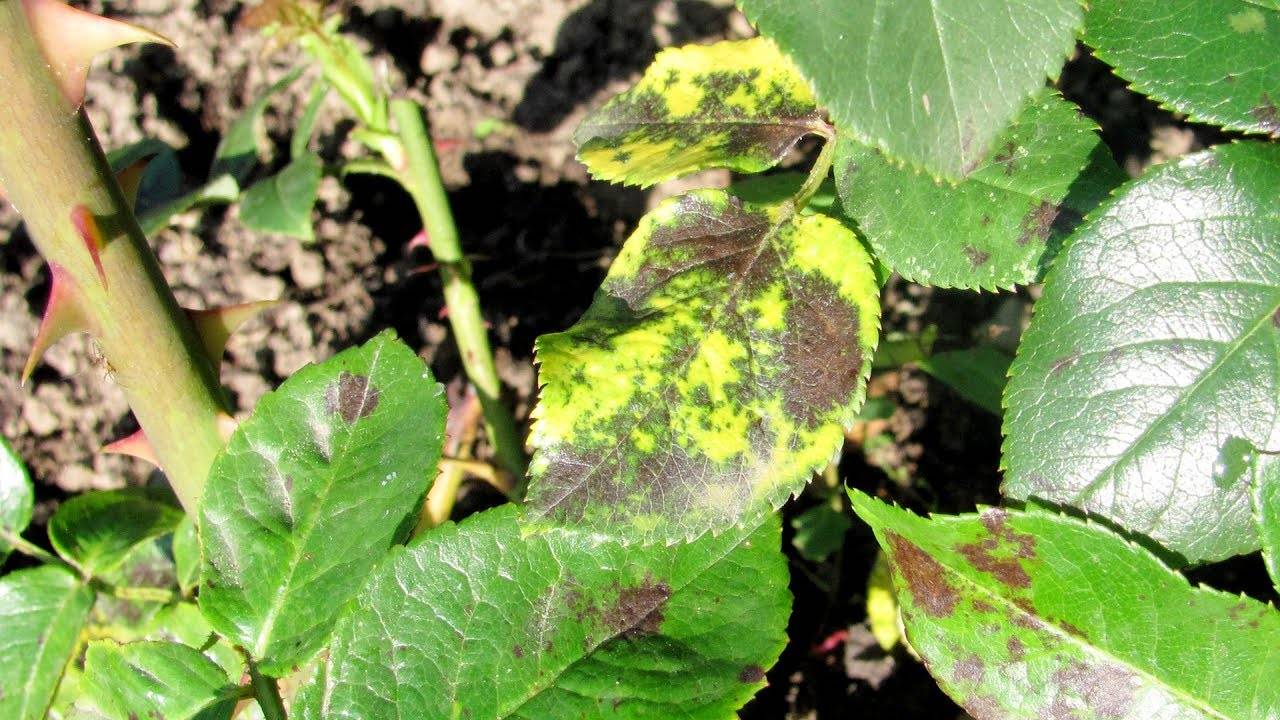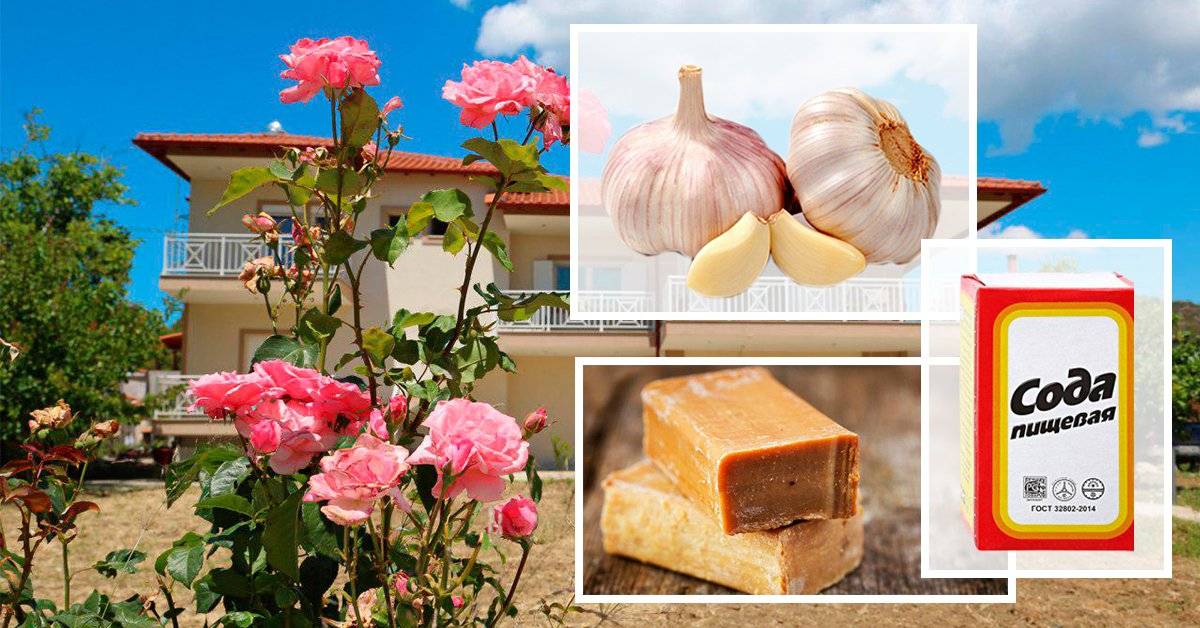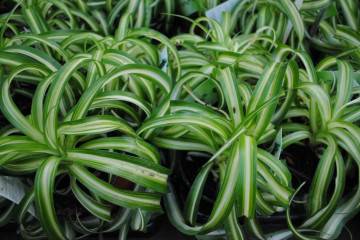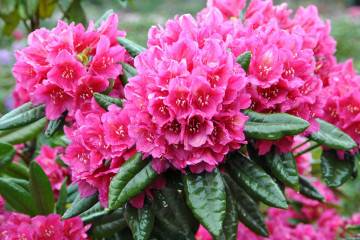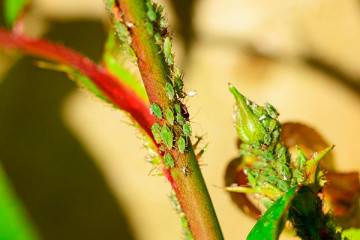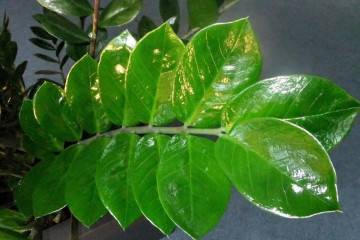Diseases of roses - treatment and pest control
Content:
Roses are able to effectively decorate any garden area. However, improper care, excessive thickening of the planting, mechanical damage to the bushes can cause the development of diseases. Below is a description of the most common diseases and treatment methods for hives.
What contributes to infection
An incorrect soil moisture regime can provoke the development of most diseases. When it rains for a long time, the leaf plates do not have time to fully dry out. Against this background, the rose is affected by black spot.
Among the main causes of the onset of diseases are:
- thickening of the planting. When planting bushes, it is important to leave enough space between them so that they are fully ventilated. It is important to systematically weed the soil from weeds. Regular loosening of the soil and a properly selected soil irrigation regime will avoid rotting of the root system;
- insufficient preparation of the soil for the winter cold. Plant debris and larvae remaining in the ground cause infection of roses. In the autumn months, it is recommended to dig up the site and treat it with fungicidal agents, which is a necessary preventive measure;
- deficiency of useful elements, which occurs in cases when fertilizers are applied to the soil in insufficient quantities. Experts recommend applying mineral fertilizers in the autumn months, and fertilizers containing nitrogen in the spring;
- lack of proper care for ornamental crops. Roses must be systematically sprayed with fungicidal and insecticidal agents for the purpose of prevention, properly moisten the soil and cut off damaged branches.
Common rose diseases
Below is information about rose diseases and their treatment. The listed methods of combating diseases will help to cope with almost any ailment and save the plant from death.
Fungal diseases of roses
Fungal infections often affect decorative crops with thorns. Not only the aboveground part can suffer, but also the root system. Among the most common fungal diseases are:
- downy mildew, which affects the top of the leaf blades. The spots, painted in colorless or yellow-brown tones and located on the foliage of the rose, will indicate an ailment. A grayish bloom forms at the petiole. To prevent the disease, too dense planting of bushes should be avoided. For the treatment of affected plants, it is recommended to carry out treatment with Trichodermin, Planriz;
- black spot, in which the affected leaf plates begin to turn black. The disease most often develops in mid-July during a prolonged rainy period. The upper part of the leaf blades is covered with small rounded or star-shaped spots with veins. Gradually, the size of the spots increases, the leaf plates begin to curl and fall off.The photosynthesis process slows down. The plant looks weak. In order to prevent the occurrence of the disease, experts recommend timely cutting and burning the affected foliage. Further processing of such sheets is not possible. To treat black spot, it is necessary to spray the bushes with a fungicidal agent.
Root rot
Rot, which occurs against the background of an excess of moisture in the soil, often causes the death of bushes. Disease damage is indicated by black spots that quickly spread to the lower part of the stem. The bark of an ornamental culture dies off along with dormant buds. The leaf plates turn yellow (sometimes they acquire a light orange tint), a grayish bloom appears on the buds. In some cases, white spots may appear on the leaves of roses. On the opened flowers, you can see small brown dots. As a preventive measure, experts recommend systematically inspecting the plantings, cutting off the affected shoots, and collecting and removing fallen leaves in the fall. It is also important to water the flowers correctly so that the soil is not waterlogged.
Bacterial lesions
Bacterial stem cancer often develops against the background of pathogenic bacteria. Growths form on the root system of the affected plant, gradually growing, decaying and taking on the appearance of an unpleasant wet mass. Brown spots appear on the leaf plates. Most of the bark dries up and dies off. Soon, the bush that managed to get sick dies.
It is important to treat the affected parts of the bushes as soon as possible with Bordeaux liquid. The affected parts of the bush must be cut off and burned.
For the treatment of bacterial diseases, it is advisable to process not only the bushes, but also the soil in which they grow. Among the most effective drugs that help to cope with bacterial ailments, there are:
- phytosporin-M;
- gamair;
- planriz.
Viral diseases
Mosaicity of leaf plates indicates the development of a viral disease. The affected foliage withers, the growth of culture slows down, or even stops altogether. Often ants and the use of dirty garden tools in the process of caring for an ornamental crop become the cause of the disease.
Bark necrosis
Necrotic ailments affect the bark of rose shoots. It begins to change its shade, crack and die off. The development of the disease can be triggered by a variety of fungal infections.
Among the most common types of bark necrosis, from which roses can suffer, are:
- drying of the shoots, against the background of which there is a change in the shade of the shoots and their further wilting;
- cytosporosis, in which the bark of the shoots becomes brown and begins to die off rapidly;
- diaported stem cancer. In the area of the bark of the branches, spots of a purple hue are formed. Affected stems dry up.
How to treat roses from diseases
Roses are sick, what to do? To cope with various diseases affecting ornamental crops, it is worth spraying the bushes with effective drugs. The most popular remedies are described below.
Tiovit jet
Tiovit jet is a chemical inorganic contact agent that contains sulfur. Excellent protection against various diseases. The granules of the preparation interact with water to form a suspension. With the help of the drug, you can quickly cope with powdery mildew.
For every 15 liters of liquid, 140 g of thiovit jet will be required. In order to prevent diseases of garden roses, spraying can be carried out every month during the warm season.
inkstone
How to treat spots on roses? Of course, iron vitriol. Iron vitriol is a chemical agent of contact action. The composition of the drug, which is an excellent antiseptic, includes ferrous sulfate. Iron vitriol helps to cope with:
- black spot;
- gray rot on roses (botrytis);
- powdery mildew.
Speed
Scor is a chemical organic agent, the active component of which is difenoconazole. The drug allows you to cope with powdery mildew, gray rot and brown rust in a short period of time. For medicinal purposes, it is advisable to spray the bushes that begin to rust several times. For every 15 liters of liquid, 6-10 ml of the product will be required.
Strobe
Strobi is a chemical preparation, the active ingredient of which is kresoxim-methyl. With the help of the tool, you can cope with rust and powdery mildew in a short period of time. Spraying for medicinal purposes is carried out in three stages. To prepare the solution, you will need 12 g of granules per 15 liters of liquid.
Fitosporin
A biological agent, the active substances of which are living cells. The fungicide is marketed as a powder, liquid, and paste. Fitosporin effectively fights the symptoms of powdery mildew and root rot. Why not use it for the prevention of ailments? To prepare the solution, you will need 15 ml of phytosporin and 15 liters of pure water.
Trichodermin
Trichodermin is a biological agent of contact action, which includes spores and mycelium of antagonistic fungi. Trichodermin allows you to quickly deal with rot.
Folk remedies
To treat roses from diseases, flower growers use both fungicidal and folk remedies. The most effective antiquated methods are described below.
- Wood ash with mullein. 1.5 kg of mullein is bred in 20 liters of water. 300 g of wood ash is added to the liquid mixture. The prepared solution should be infused for 10 days. The tincture is diluted 1:10 and used for spraying leaf plates. This will get rid of fungal infections, cercosporosis (grayish spot), septoria and eliminate the problem when the leaves become rusty.
- Baking soda soap. In a basin of water (5 l), 1.5 tbsp is diluted. tablespoons of soda and 1 tbsp. spoon of laundry soap. The solution is thoroughly mixed and used for spraying indoor and outdoor plants.
- Potassium permanganate. 3.5 g of potassium permanganate dissolves in 10 liters of water. The solution is mixed and used for spraying bushes in spring and summer.
- Garlic. About 500 g of garlic is crushed and filled with 10 liters of water. The garlic mixture is infused for 24 hours and is used to spray roses and conifers.
- Field horsetail. 1000 g of grass must be thoroughly crushed, pour 9 liters of water and insist throughout the day. The tincture is used for spraying leaf plates. It is recommended to carry out 4 procedures, the break between which should be within 7-8 days.
Pests affecting the rose, and how to deal with them
Pests can also harm roses. Below you can find the most dangerous insects for ornamental culture and how to deal with them.
Spider mite
The mite infestation is observed during the dry summer period.Insects focus on sucking the cell sap from the leaf plates, which causes the foliage to turn yellow, dry out and fall off. To get rid of spider mites, it is recommended to treat green spaces with drugs such as:
- spark-M;
- fufanon.
Green aphid
The invasion of green aphids contributes to:
- twisting and yellowing of sheet plates;
- deformation and drying of buds;
- covering the foliage with a sticky powdery layer of plaque;
- infection with viral diseases.
To eliminate insects, the bushes should be sprayed with drugs of the type:
- actars;
- inta-vira;
- golden spark.
Rose leafhopper
The rose leafhopper bites through the leaves of the rose and sucks out the sap of the plant. In the area of punctures, spots of yellow-green color appear, the diameter of which gradually expands. The damaged green mass begins to turn yellow, curl and dry out. The plant withers quickly.
Damaged parts of the bush should be cut off as soon as possible and the plantings should be treated with insecticidal agents that have a wide spectrum of action.
Rosewood sawfly and leaf cutter bee
Pests feed on the inside of the shoots, gnawing through the passages and causing the shoots to dry out. To treat the affected bushes, it is urgently necessary to treat the rose with insecticidal agents:
- decis;
- fastak;
- karate;
- aktara;
- confidor.
Leaf cutter bees
Insects harm roses by gnawing small semicircles around the edges of the leaf plates. The appearance of the decorative culture deteriorates. The distribution of nutrients is impaired. To cope with pests, it is enough to spray the bushes with soapy water or use aktara insecticide.
Beetles on roses - weevils and bronzes
Beetles often cause the death of bushes. Severely damaged leaf plates begin to fade, flowers dry up. The appearance of the rose is undergoing changes. To get rid of the plant from insects, an effective insecticide should be selected and the plantings should be treated after sunset.
Nutcracker and scoop
Walnut and scoop can cause severe damage to an ornamental plant. To cope with pests, you will need to purchase pesticides like lightning and conduct a course of spraying (2-3 procedures are enough). In addition, it is important to cut off and burn affected shoots in a timely manner.
When pests or diseases are found, it is important to start treating the bushes as soon as possible. Inaction often causes the death of a rose. Weakened plants are not able to survive the winter cold.

